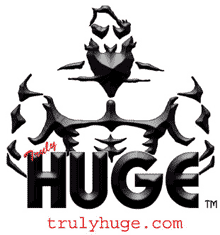
Click Here for Free Bodybuilding and Fitness Magazine Subscription
Arthur Jones Articles
Five Types of Exercise: Which is Best?
by Arthur Jones
Article from IronMan, January 1974, Volume 33 Number 2, visit www.ironmanmagazine.com
With a barbell, while training without the help of assistants, you have only one choice
regarding the type of exercise...you are restricted to a "normal" type of exercise,
movements involving in both positive and negative work.
But if assistants are available, then you have a wider choice. If the weight is lifted for
you, then you can restrict your exercise to "negative only" work.
AND...if you are training with an exercise machine, you can lift the weight with two arms
(or two legs0 and lower it with one arm (or one leg). Thus providing "negative
accentuated" work.
Until very recently, those four types of exercise were the only choices available...(1)
normal, (20 negative only, (3) Positive only or (4) negative accentuated. But now, a fifth
type of exercise has been added to the list of choices...HYPER, a new type of exercise
involving both positive and negate work and providing absolutely maximum levels of
intensity during both the lifting and lowering of the weight.
At this point in time (September of 1973), little or nothing is yet known about the results
of training with this new type of exercise...so the real value of such a type of training
remains unproven. However, certain basic points related to this new type of exercise are
already clearly established; so we can, at least, examine these known factors in the light
of simple logic.
ONE...for the purpose of increasing muscular size and strength, the results of exercise are
closely related to the intensity of work. Low intensity exercise will do little or nothing in
the way of increasing strength, regardless of the amount of exercise performed...medium
intensity exercise will increase strength, but slowly and only up to a certain limited
point...high intensity exercise is an absolute requirement for producing rapid and large
scale strength increases, and it appears that the higher the intensity, the better the results.
HPER exercises provide maximum possible intensity of exercise, during both the positive
and negative parts of the work; so it would appear to be logical to assume that hyper
exercises are better than other types of exercise for the purpose of stimulating growth.
Which is certainly an important consideration...but not the ONLY consideration. Low
intensity exercise is almost worthless for the purpose of increasing strength, simply
because it does very little if anything in the way of STIMULATING growth. So it
logically follows that hyper exercises, by providing maximum intensity, should produce
maximum growth stimulation.
Muscular growth is produced only when two factors are involved...growth must be
STIMULATED, but it must also be PERMITTED.
A resting body does not grow in a complete lack of exercise; on the contrary, in a state of
total inactivity, muscular size and strength is quickly lost.
AND ...exercised muscles do not grow unless growth is permitted by proper rest. In fact,
the results of overwork are very similar to the results of total inactivity...losses in
muscular size and strength.
Proper exercise must be of high intensity in order to stimulate growth...but it must also be
brief and infrequent in order to permit growth.
Hyper exercises raise the level of intensity to a point that was never before possible in a
practical manner, if at all...so growth stimulation should also be greater than ever. But it
is also true that high intensity exercises impose a higher level of demands upon the
overall recovery ability of the body, and it remains to be seen just what effect this will
have on the ability of the body to grow.
If we can judge by previous experience, then the use of hyper exercises will require a
great reduction in the amount of training...because, when the intensity of exercise is
increased, the amount of exercise must be reduced. When you train harder, you must
train less...and you have no choice in the matter.
Arthur Jones Articles

